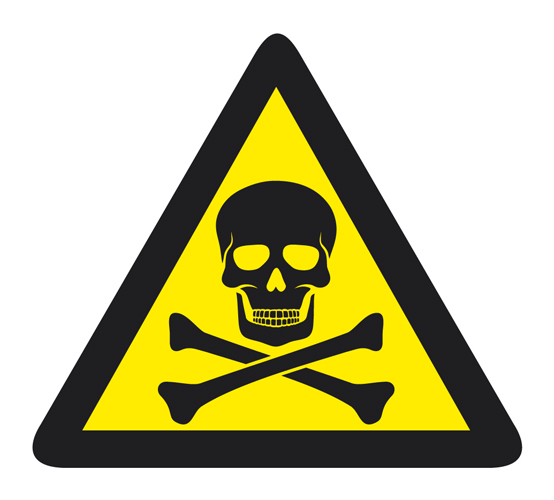In a perfect scenario, a small business would employ a staff of helpful and happy people. But we all know that’s not realistic, and there will likely be encounters with employees that can be best described as “toxic.”
Negative attitudes can act as a workplace poison. Take this story written by psychologist and consultant David G. Javitch for entrepreneur.com: “Like a virus, toxic employees can subtly — or overtly — spread their counterproductive attitudes or actions that can negatively impact the workplace. Their harmful, contrarious and antagonistic attitudes and actions can easily spread to other employees who then begin to agree with and identify with the toxic individual.”
Considering all the challenges that businesses with limited staffing and shoestring budgets face, the fewer toxic employees, the better.
Here are a few ways to approach it.
Prevention.
Ideally, toxic personalities wouldn’t even be in the workplace mix. There are ways to detect potential issues during the interview process, like self-assessment tools, as Baird Brightman suggests in a story for fastcompany.com. But if problems emerge after hiring, take an active approach.
“This means detecting the behaviors early in a person’s tenure and minimizing its impact,” writes Brightman. “This can involve providing some education and coaching about toxic behaviors during the first weeks of employment as well as early detection through the use of behavioral assessments that use a ‘360 degree’ format that includes both verbal and written feedback accompanied by a focused mitigation (coaching/training) plan.”
Identify and investigate.
If an employee is displaying toxic behavior, it probably won’t take long to know it. An in-tune small business owner will likely catch wind of it from other employees. And if it’s significant enough, he or she will need to tackle it quickly, as Javitch writes for entrepreneur.com.
“You don’t want to take any action based simply on hearsay or assumptions,” writes Javitch. “So your first step is to talk to any managers or supervisors who work directly with the toxic employee. Look at error rates, attendance or tardiness records, late arrivals or early departures. Determine whether the employee’s work, such as reports or projects, is being completed on time and with top quality. If projects are late, delayed or laden with errors, try to determine why or if a pattern exists. Investigate the complaints of negativity or antagonism. Do these occur with just one individual or with several or many individuals? In other words, is this an isolated personal issue between two people or one that’s happening across the board?”
Emphasize teamwork.
The only thing worse than a toxic employee is a bunch of toxic employees. Considering that many businesses, especially small ones, are prone to gossip, it’s especially important to not let the bad vibes multiply. Andre Lavoie writes about this for entrepreneur.com.
“Avoid this unfavorable environment by ensuring policies and rules are the same for everyone, and encourage working together on various projects,” writes Lavoie. “Consider regular happy hours that are hosted by different teams throughout the company. This will allow all employees to get to know each team on a more informal level and is especially useful if certain teams aren’t able to mingle with the rest of the organization as regularly as they’d like. If it isn’t possible to mix groups for client projects, create projects internally that can benefit the company or mix up groups at company events.”
Take it on, head-on.
Once all the background work has been done, it’s likely time for a one-on-one meeting with the source of all the toxicity.
As Javitch writes for entrepreneur.com, “The goal here is to have a positive interaction with the employee, not an argument or negative confrontation. What you’re attempting to do is determine the accuracy of your information as compared to the toxic employee’s version.”
Here are his steps to take in that meeting:
- Share your overall concerns: “In other words, don’t jump all over the employee with your information. Doing so will simply create a negative atmosphere and immediately put the employee on the defensive.”
- Let the employee have his or her say: “… Allow the employee to share their views of the situation, their relationships with their colleagues, their behavior at meetings, and any other areas in question.”
- Acknowledge your information gathering: “Identify key areas of inconsistency between your information and the toxic employee’s views. Attempt to reconcile the views or at least get an understanding as to why differences in perceptions of the situation exist (the old “he said/she said” argument). Attempt to demonstrate how you and others see the employee as negative or toxic, even if the employee’s views differ from yours.”
- Evaluate the consistency: “Either the employee’s views are inconsistent with your information, or the information from both sides is compatible. In the first case, the employee might refuse to believe your information. Then the employee can either decide to change their behavior and attitude anyway just to be more aligned with the behavior and attitude you want. Or the employee can simply refuse to change. In the second scenario, you’ll then have to decide whether to begin an official warning system procedure or the termination process.”
This article was syndicated from Business 2 Community: Managing Toxic Employees






